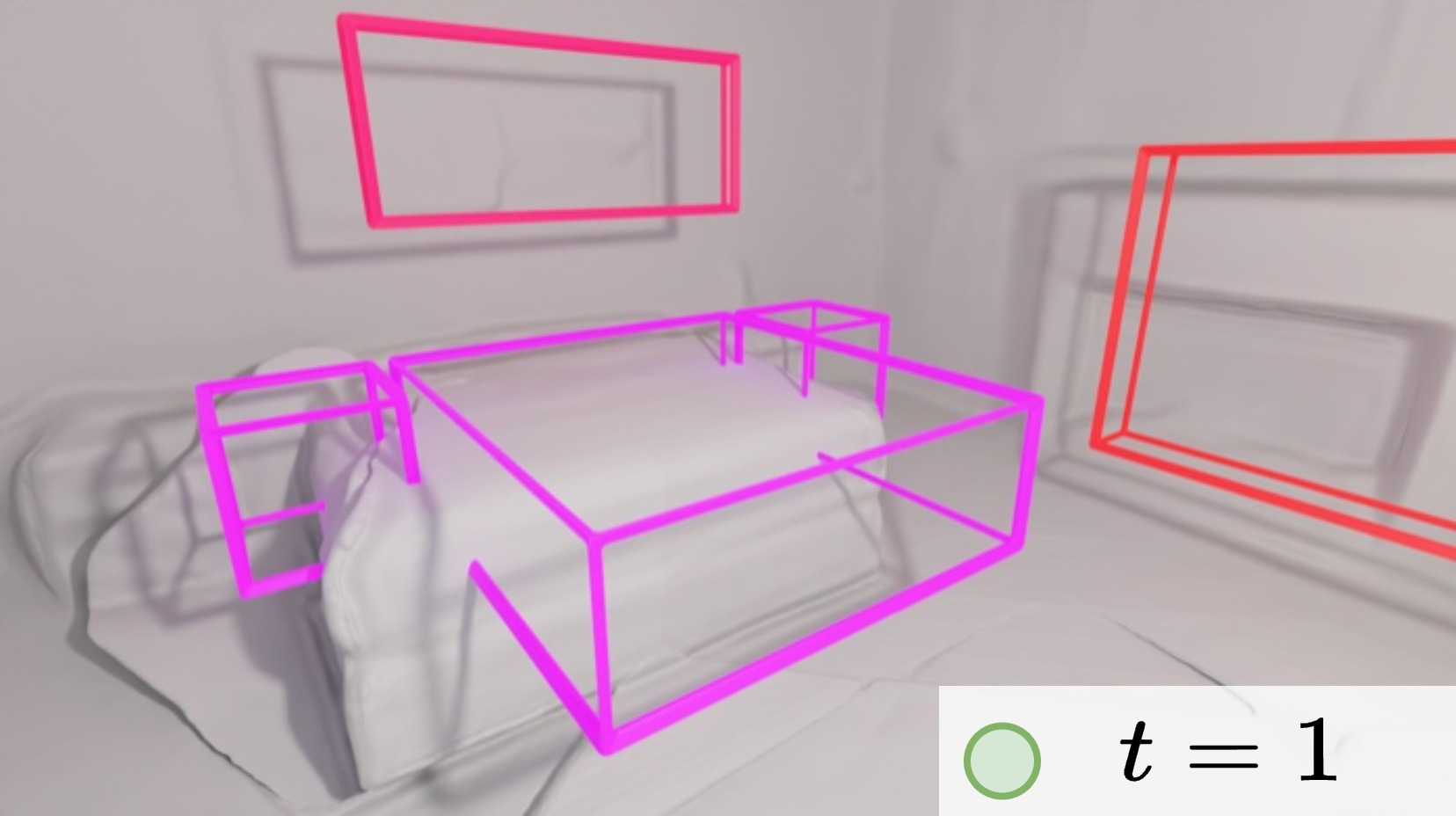SAM Masks
We leverage SAM to obtain pixel-precise instance masks for
each object.
For pixels located within the rendered bounding box but outside the SAM mask, we assign the near depth
value to the far depth.
Including SAM masks leads to sharper 3D object boundaries, resulting in a more seamless integration
into the 3D room mesh.


